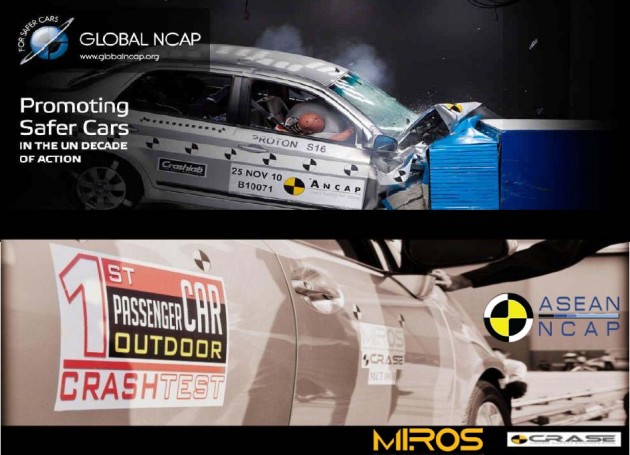
An update on the New Car Assessment Program for Southeast Asian Countries (ASEAN NCAP). Back in May, the announcement of Phase III results saw the conclusion of the three-phase pilot project, which began in January 2013.
Following this, the agency - which operates under the aegis of the Malaysian Institure of Road Safety Research (Miros) – has now announced that it is moving towards its next stage as planned. According to its road map, the agency is set to operate like other NCAP organisations around the world, in which testing and the release of results are routinely carried out.
Bernama reports ASEAN NCAP secretary-general Khairil Anwar Abu Kassim as saying that the organisation would be fully operational next August and would carry out safety testing on new cars periodically. It was however not revealed how often testing would be carried out.
The three phases of pilot testing saw 30 vehicles, including variants of particular models, being evaluated. The first phase saw eight test results being announced in February last year, followed by Phase II test results for 11 vehicles coming about in August 2013. Phase III testing saw an additional 11 vehicles being rated.
Evaluation saw the cars being subjected to an offset frontal collision test, which involves striking a deformable barrier with an overlap of 40% at 64 km/h. In Phase III, a UN R95 side impact test was added, consisting of a mobile deformable barrier striking the side of each car at 50 km/h.
The tests were carried out at two laboratories – Miros' Provisional Car Crash Centre in Malacca and the Japan Automobile Research Institute (JARI) laboratory in Tsukuba, Japan, the latter in Phase III testing. The JARI facility is an appointed ASEAN NCAP official test lab, and the programme's first test lab outside the ASEAN region.
Read all about our ASEAN NCAP coverage, including Phase I, II and III test results, here.

No comments:
Post a Comment